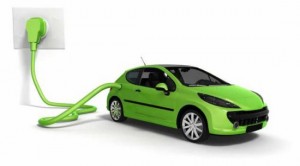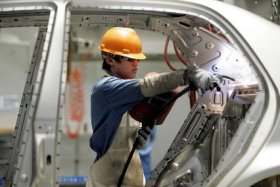by Jon LeSage, editor and publisher, Green Auto Market
Here’s my take on the 10 most significant and interesting occurrences during the past week…….
 EV sales up 59%: Sales of battery electric and plug-in hybrid vehicles in July shot up about 59% over a year ago, with the Chevy Volt leading the pack, according to HybridCars.com’s Dashboard. EV sales were up 3.7% over June. The Volt sold 2,406 units in the U.S. in July – 24.2% over June and 83.2% over July 2015. It only had a slight lead over the Tesla Model S, which was estimated to have sold 2,400 units in that month. The Tesla Model X estimate came in at third with 1,500 sold, but that was down 25% from the previous month. The BMW i3 had a leap in sales over June with 1,479 sold – 143.3% over June and 58.2% over the previous year. Hybrid sales saw a gain over June, up 17.8%, but were down 8.5% over June 2015. The Toyota RAV4 hybrid was up about 25% over June, and the Ford Fusion Hybrid has been doing very well with 38.4% over June and 63.1% over July 2015.
EV sales up 59%: Sales of battery electric and plug-in hybrid vehicles in July shot up about 59% over a year ago, with the Chevy Volt leading the pack, according to HybridCars.com’s Dashboard. EV sales were up 3.7% over June. The Volt sold 2,406 units in the U.S. in July – 24.2% over June and 83.2% over July 2015. It only had a slight lead over the Tesla Model S, which was estimated to have sold 2,400 units in that month. The Tesla Model X estimate came in at third with 1,500 sold, but that was down 25% from the previous month. The BMW i3 had a leap in sales over June with 1,479 sold – 143.3% over June and 58.2% over the previous year. Hybrid sales saw a gain over June, up 17.8%, but were down 8.5% over June 2015. The Toyota RAV4 hybrid was up about 25% over June, and the Ford Fusion Hybrid has been doing very well with 38.4% over June and 63.1% over July 2015.- Building Karmas in China: Wanxiang Group, the owner of Karma Automotive, has applied for a license in China to build plug-in hybrids on the Fisker Karma platform. The Chinese auto parts supplier is one of several non-automakers entering the electric car market in China as the government offers manufacturers incentives for building the cars and to consumers for buying them under the “new-energy vehicles” plan. In the U.S., Karma Automotive is setting up a marketing campaign modeled after Tesla’s corporate-owned store model and Fisker Automotive’s previous concept of creating a network of luxury franchised dealers. Starting in September in Orange County, Calif., with the launch of the Revero four-dour coupe, Karma will show the first of its “brand experience centers” similar to a Tesla retail store.
- Clinton supporting RFS: The Hillary Clinton campaign has dismissed a media report that it’s supporting California’s low-carbon fuel standard model over the federal biofuels blend in the Renewable Fuel Standard. Republican candidate Donald Trump has also been said to support RFS. “As Hillary Clinton said repeatedly during the primary, she is committed to getting the RFS back on track and making sure the US remains a leader in advanced biofuels,” said Tyrone Gayle, a Clinton campaign spokesperson. “While we have engaged a wide range of stakeholders and experts throughout the campaign on biofuels and other issues, we do not support replacing the RFS with a national low-carbon fuel standard.”
- Krafcik on Tesla crash: John Krafcik, CEO of Google Self-Driving Car Project, was interviewed by Bloomberg on several big topics, including the fatal Tesla crash using the Autopilot semi-autonomous system. Krafcik brings his years of experience in product development at Ford and serving as CEO at Hyundai Motor America. He’s one of several auto executives now on the Google team, he said. To start off, Krafcik said it’s important to keep in mind that the Tesla with Autopilot wasn’t a self-driving car; or Level 4 (L4) in the federal guidelines for autonomous vehicles, which is called Full Self-Driving Automation. “That was a car with traffic-aware cruise control and a lane-keeping function – an L2, where, for better or worse, it was the responsibility of the driver to be cautious,” he said. “We, as humans, are fallible creatures. [The crash] confirms our sense that the route to full autonomy, though much harder, is the right route.”
- Tesla Motors quarterly report: Tesla Motors Inc. reported its 13th straight quarterly loss to shareholders. Revenue shot up 33% during the quarter ending June 30 to $1.27 billion from rising sales of its Model S and Model X. The cost of ramping up production has taken its toll, and delivery has been behind schedule. Tesla reported last month that it had missed its delivery target for the second consecutive quarter, raising doubts that it would hit its annual target. The company’s net loss widened to $293.2 million in the second quarter, from $184.2 million a year earlier.
- GM EV1 chief hired: Faraday Future has brought over the head of General Motors’ EV1 program from the 1990s. Peter Savagian, the former electric propulsion chief, at GM has been hired by Faraday to lead the powertrain development of its first production model. Electrek reported on after seeing it on LinkedIn, where Savagian lists himself as Faraday Future’s vice president for engineering and says he will “lead engineering operations for powertrain, battery and related high voltage systems.”
- Clean transportation growth in California: A new Calstart report indicates that California’s climate and energy policies are not only helping to protect the environment and improve air quality, but are also helping to accelerate growth of the clean transportation technology industry in the state. The report profiles the development of a burgeoning manufacturing sector that is producing zero- and near-zero emission light, medium and heavy duty vehicles, as well as clean fuels, engines, vehicle components, and new mobility services.
- GNA supports sustainability at Port of LA: Los Angeles Mayor Eric Garcetti last month announced the formation of a new advisory board to help reduce carbon emissions and guide sustainable growth at the Port of Los Angeles. Gladstein, Neandross & Associates (GNA) worked with the Port and the Mayor’s office to identify, invite and confirm participation of a diverse collection of committee members including, environmental, labor, industry, government, and community leaders. The 10-member Sustainable Freight Advisory Committee will work to advance sustainable policy and expand the use of zero-emission technology at the largest container port in the nation.
- CAR study on urban mobility: The Center for Automotive Research released a report at the Management Briefing Seminars concluding that ride hailing services such as Uber and Lyft could transform worldwide transportation, but don’t expect car sales and transportation to change dramatically in the U.S. Millennials and some baby boomers in U.S. cities are proving to be early adopters for services such as carsharing, ride-hailing/ridesharing and even bike-sharing, CAR says. But Americans in less densely populated suburbs and rural areas will continue to rely on traditional car ownership. CAR forecasts carsharing programs will attract 3.8 million users and nearly 51,000 vehicles in 2021, up from 1.6 million users in 2014.
- What GM thinks about shared rides: General Motors sees demand for ridesharing and carsharing growing 95% in the next two years, Julia Steyn, GM’s vice president of urban mobility programs said at the CAR Management Briefing Seminars in Traverse City, Mich. Steyn said customers of Maven, GM’s personal mobility brand, have driven more than five million miles since the its January launch with acceptance from customers going strong. “The whole idea of owning a car, parking it for $1,000 a month and letting it sit there 90 percent of the time is just ludicrous,” Steyn said.

